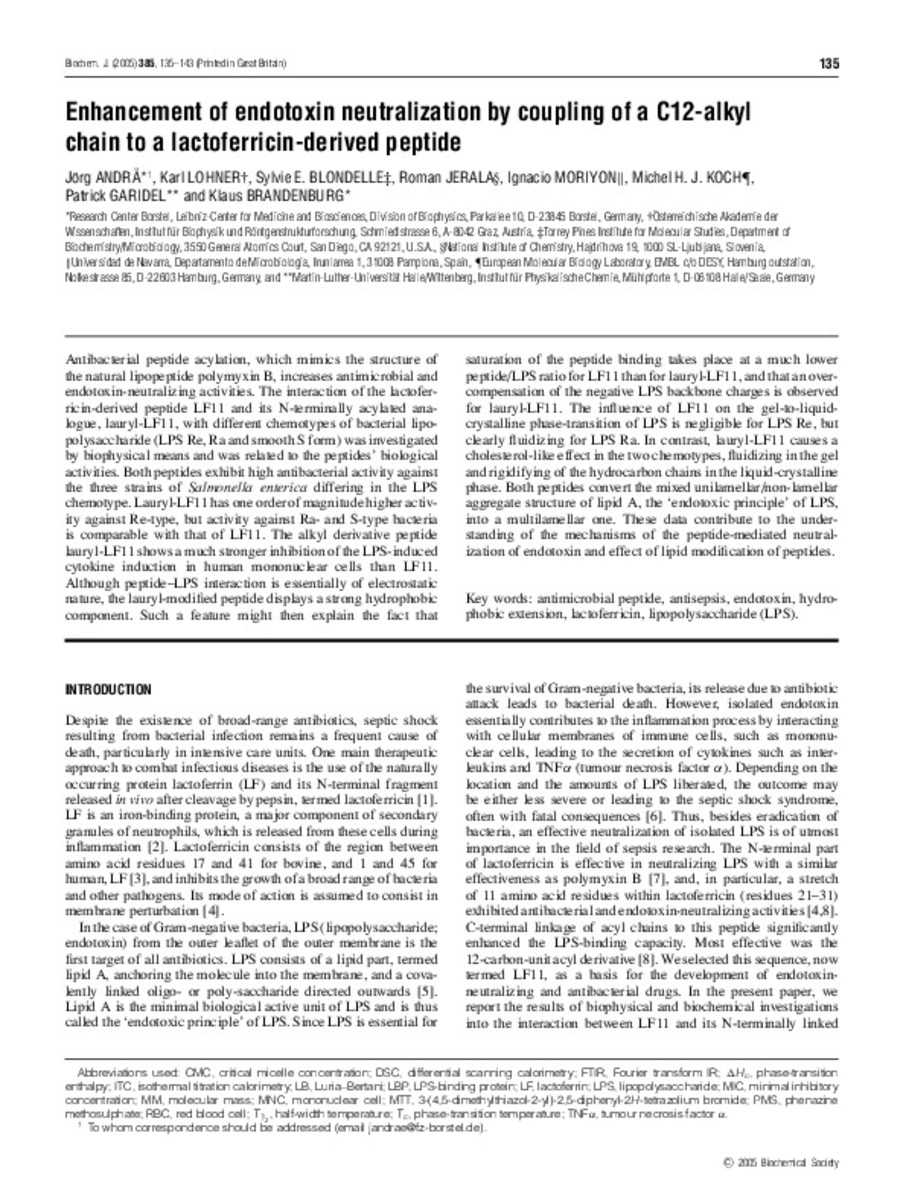Enhancement of endotoxin neutralization by coupling of a C12-alkyl chain to a lactoferricin-derived peptide
Keywords:
Antimicrobial peptide
Antisepsis
Endotoxin
Hydrophobic extension
Lactoferricin
Lipopolysaccharide
Publisher:
Portland Press
Citation:
Andra J, Lohner K, Blondelle SE, Jerala R, Moriyon I, Koch MH, et al. Enhancement of endotoxin neutralization by coupling of a C12-alkyl chain to a lactoferricin-derived peptide. Biochem J 2005 Jan 1;385(Pt 1):135-143.
Statistics and impact
0 citas en

0 citas en

Items in Dadun are protected by copyright, with all rights reserved, unless otherwise indicated.







